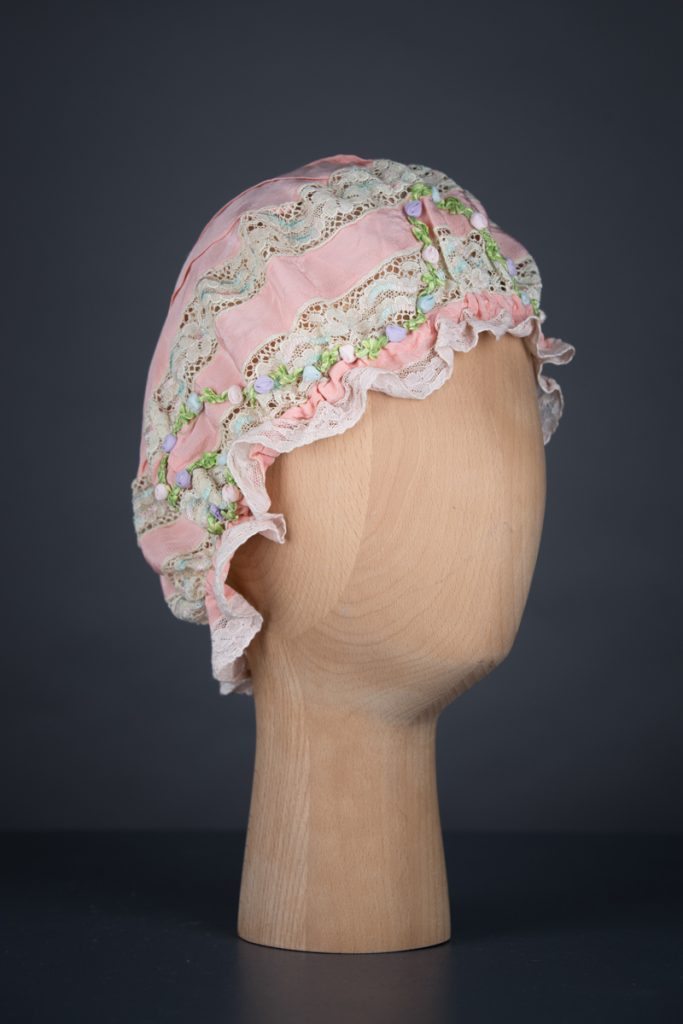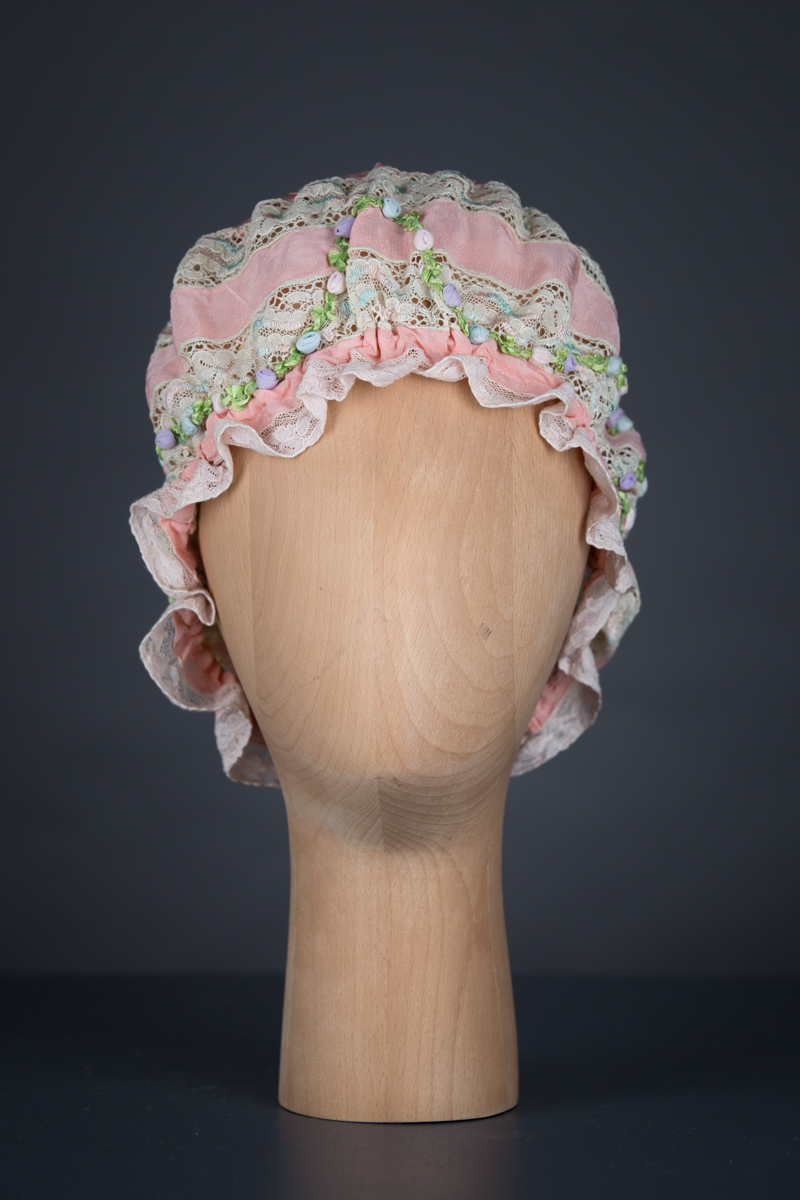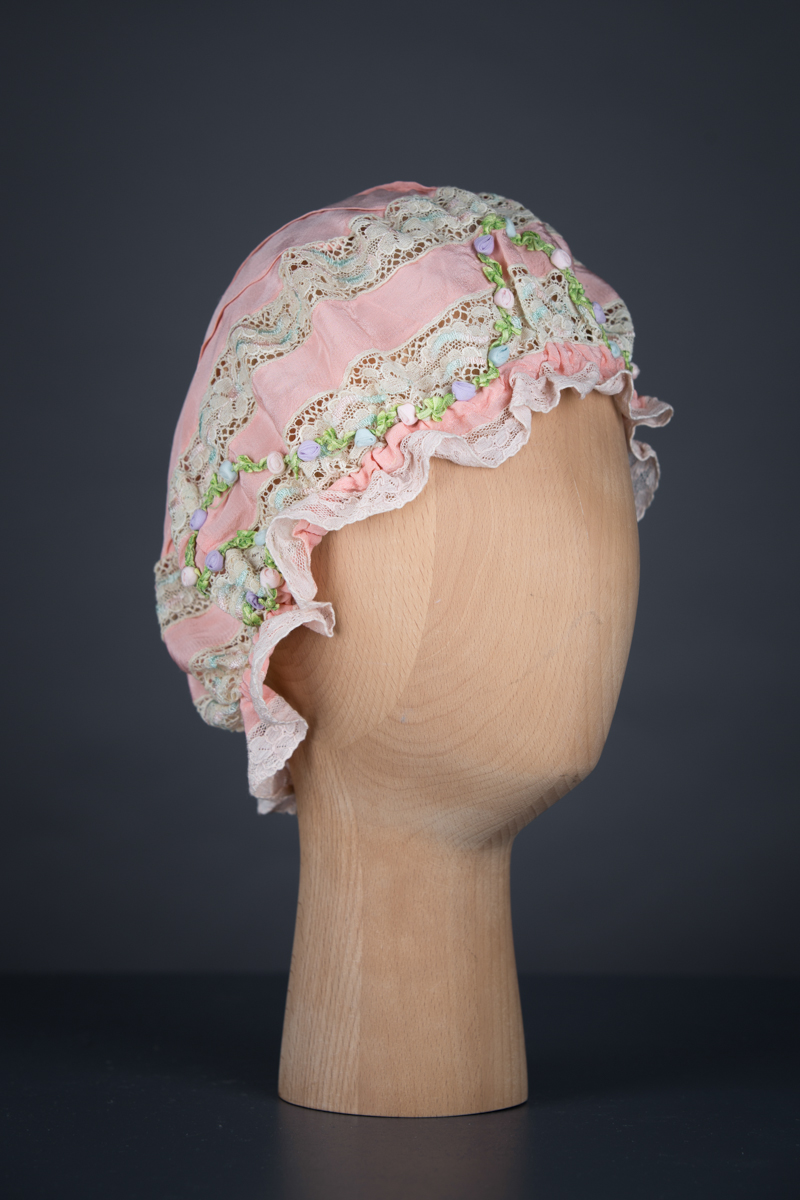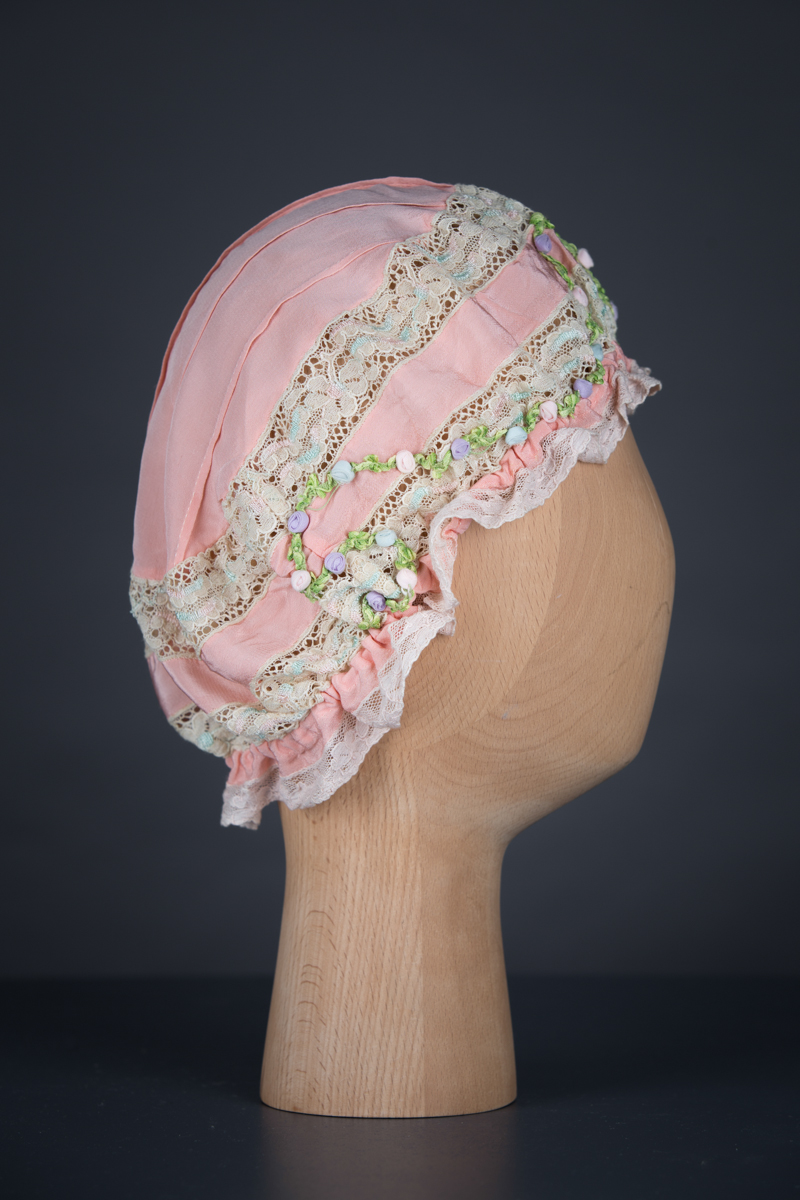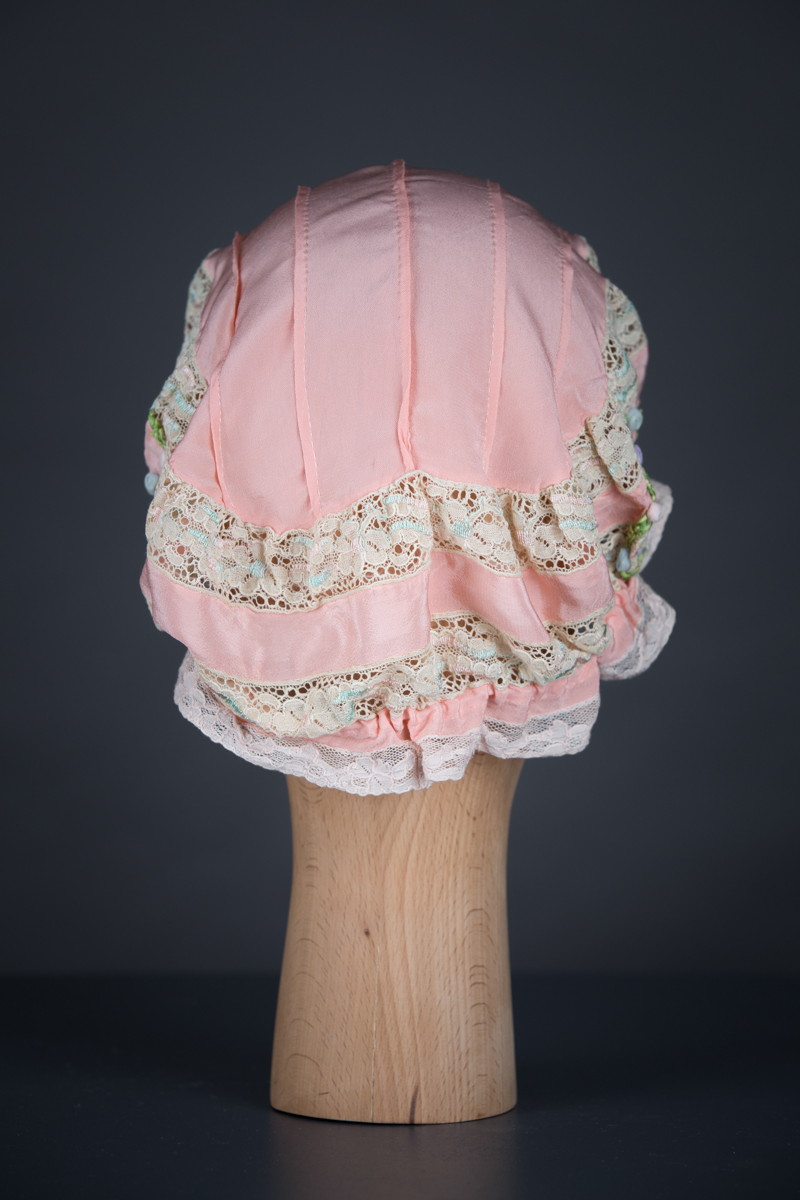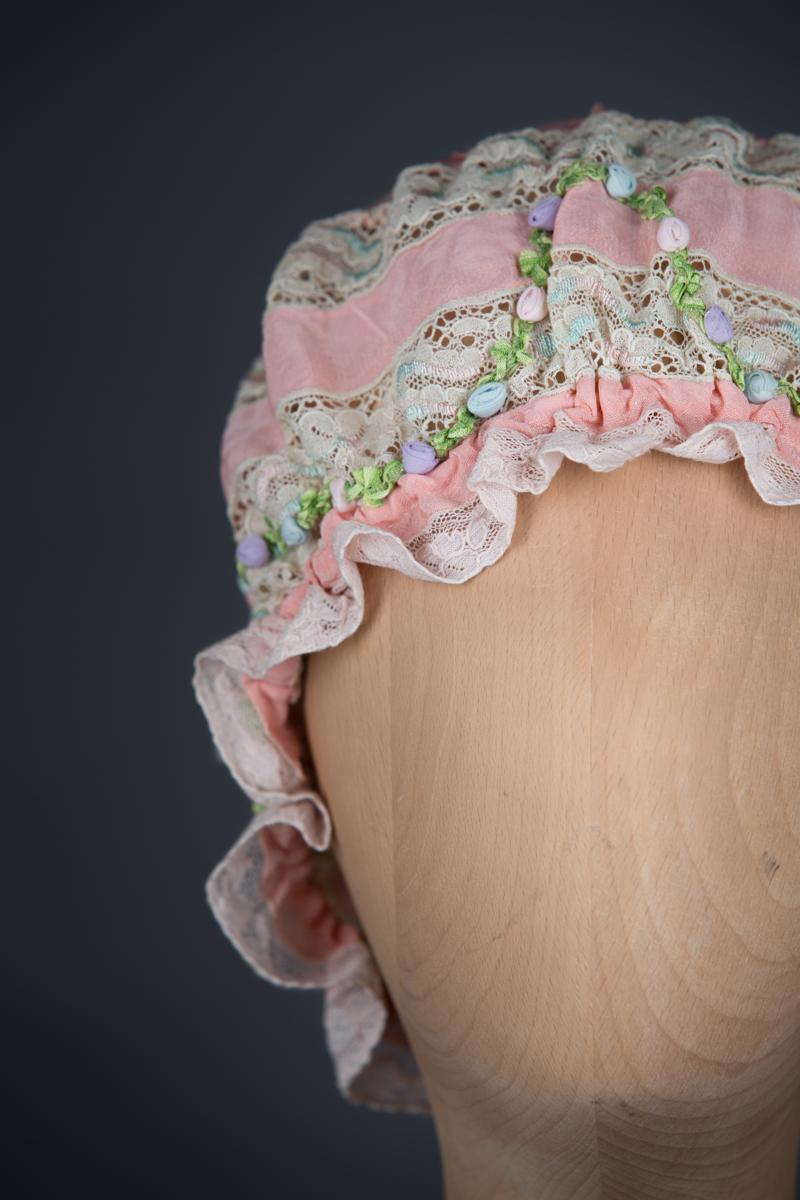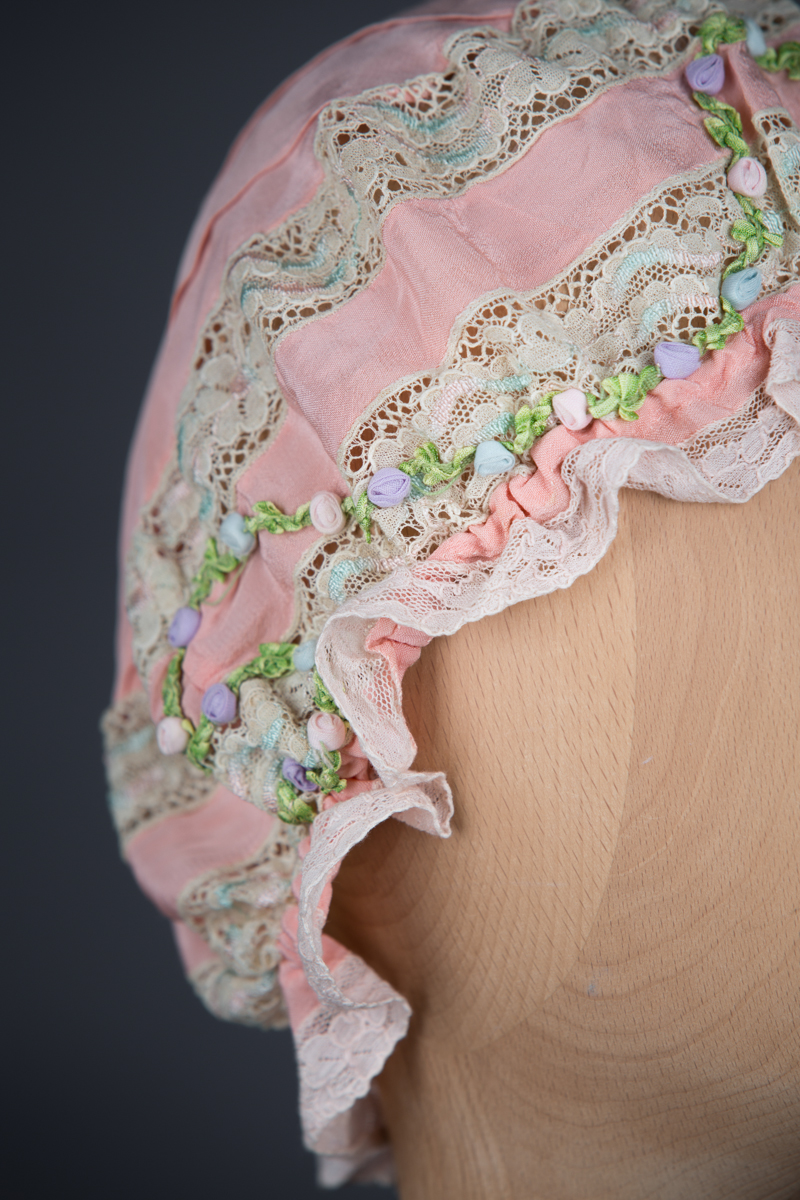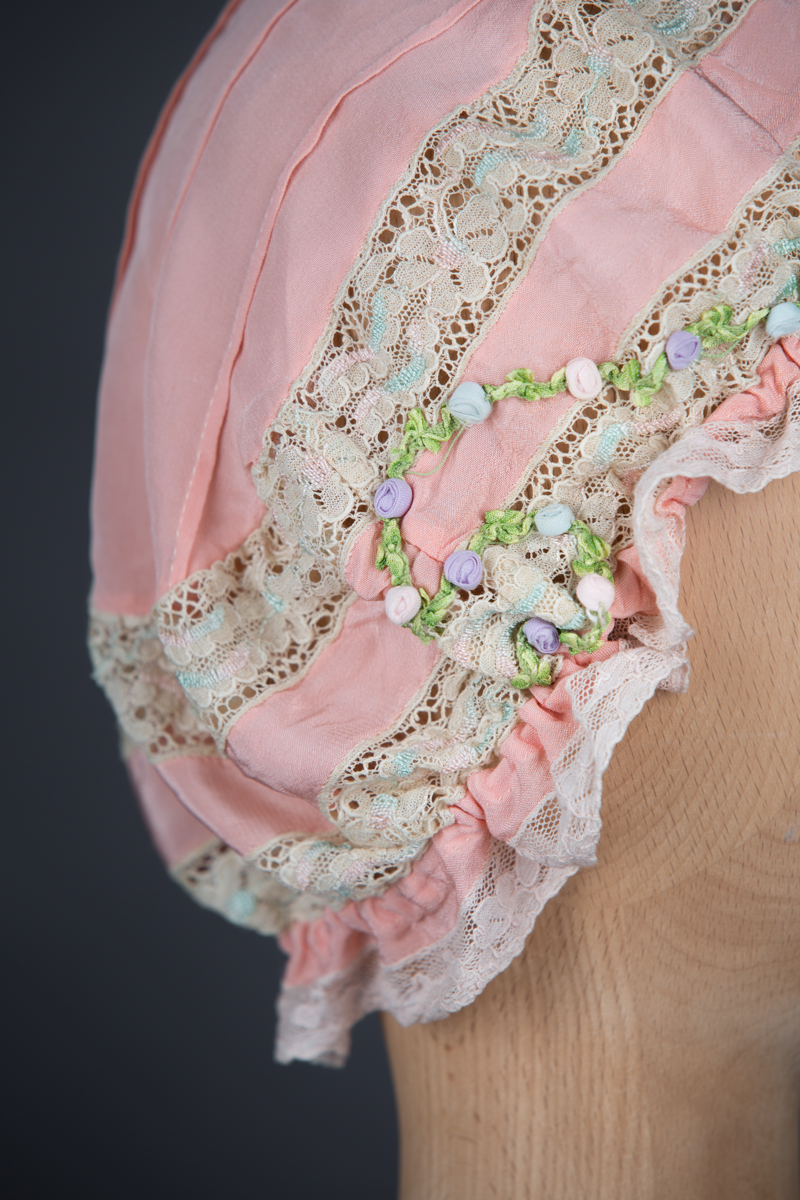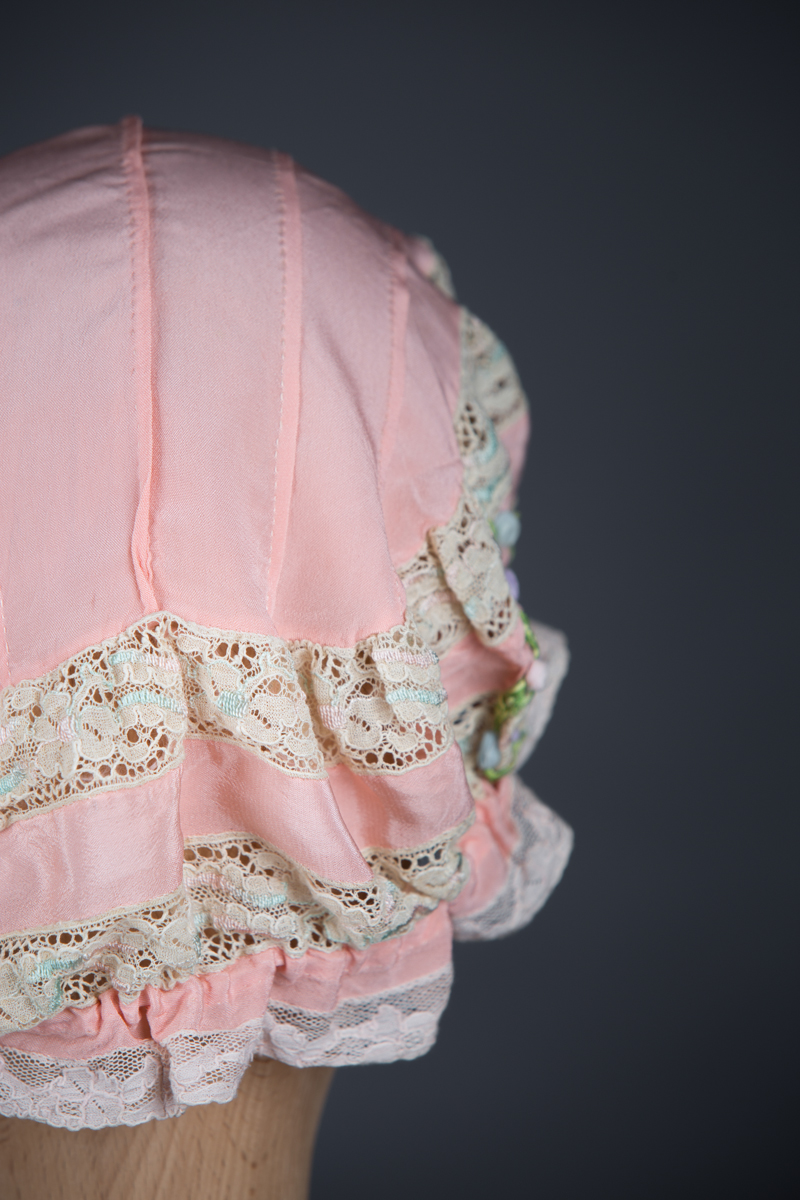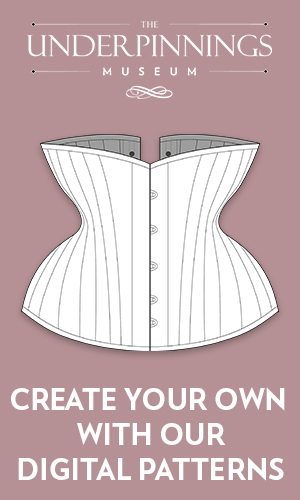Date: c.1930s
Origin: Great Britain
Fabric: Silk crêpe, insertion lace and silk ribbon
Brand: Custom made
A boudoir cap with a pink silk crêpe base with rows of ecru and blue insertion leavers lace, embellished with silk rosette ribbon. The crown of the cap has delicate machine pin tucks. The edge of the cap is trimmed with a narrow white lace trim. The cap was originally elasticated with a narrow cord elastic, though this has now perished and offers no stretch or recovery.
The boudoir cap is a type of lingerie headwear, most commonly worn during the nineteenth to early twentieth centuries. It was originally worn over undressed hair, worn in the privacy of the boudoir alongside nightwear. In the 1910s and 1920s, it would be commonly worn to protect shorter hair styles during sleep. As the designs became more and more elaborate towards the 1930s, it began to be considered more of a decorative hair net. Like other forms of lingerie, boudoir caps were usually made in fine fabrics such as lace, tulle and satin. Embellishment was often profuse, with techniques such as ribbonwork being particularly commonplace.
From the collection of Karolina Laskowska
